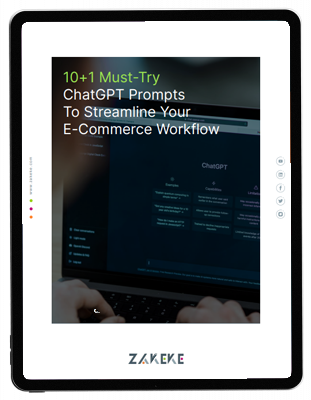Running an online store requires constant monitoring of various metrics to explore the tendencies, fix all the issues promptly, and keep the business afloat.
For example, everyone is used to the need to perform eCommerce website CRO audits. Among other most commonly tracked eCommerce KPIs are average order value, customer acquisition cost, retention rate, etc. The list of these metrics should be determined by each business separately, depending on their individual needs.
Yet, no enterprise should overlook the customer lifetime value (CLV) metric. It is vital for building a long-term strategy. This article explains all the benefits of measuring CLV and provides a complete guide and tips on doing so.
Customer Lifetime Value Defined
Customer lifetime value indicates a customer’s worth to a business over time. Every single transaction a customer makes on your website is taken into consideration, from their very first purchase all the way up to their most current purchase.
Client lifetime value is inextricably related to customer satisfaction. Simply said, you know you have a pleased consumer who is a part of a loyal user base if they are eager to come back to your store or services and make further purchases.
In most cases, a lifetime value can be considered good if it offsets your customer acquisition expense. If you can reach a CLV that is between three and five times your cost per new client, it is an excellent figure.
How to Calculate Customer Lifetime Value in Ecommerce?
There are several ways of calculating Customer Lifetime Value in ecommerce. We’ll focus on the standard one: Customer Lifetime Value = Customer Value x Average Customer Lifespan.
The CLV result is the amount of money you anticipate a typical client will spend with you over the course of their relationship. Let’s figure out how to calculate customer lifetime value.
To apply the formula, you need to know that Customer Value = Average Purchase Value x Average Number of Purchases. To count Average Purchase Value, divide total revenue by the number of orders.
Another element of the CLV formula is the Average Customer Lifespan. Count it the following way: Average Customer Lifespan = Sum of Customer Lifespans / Number of Customers.
Taking all these formulas into consideration, we should calculate CLV like this:
Other Metrics to Track
To have the full picture, consider tracking more metrics, for instance:
- Average Purchase Frequency Rate: With this metric, you can determine how often customers make repeat purchases. This statistic also provides information on churn reduction, future income sources, trends in customer behavior over time, and customer engagement and loyalty. Divide the total number of purchases by the total number of consumers who made purchases during that time to obtain the average purchase frequency rate.
- Customer Acquisition Cost: You may determine how successful marketing and sales techniques are, allocate resources properly, and identify appropriate possibilities to increase customer retention by comparing the cost to acquire a client with their lifetime value.
- Average Purchase Frequency Rate: You can observe the typical income each client brings in over the course of a time period by looking at the average purchase value. This data helps you find new and viable products or services as well as additional methods to increase value per transaction and revenue. Evaluating this number also reveals prospects to increase the value of each transaction, new ways for cross-selling and upselling, and shows whether new cross-selling and upselling opportunities exist.
To learn the figure, divide the total number of purchases by the total number of distinct consumers that made purchases during that time.
Why Monitor and Improve CLV in Ecommerce?
Gaining a better understanding of your customer lifetime value in ecommerce can help you run your e-business more efficiently in a number of key aspects. You may use it to identify areas that need development. Here are several other ways you can benefit from tracking CLV:
Increasing Revenue
Working to pump up CLV is like giving your customers the VIP treatment. You can jazz up your products, pricing, and even loyalty programs. Plus, with a clear idea of a customer’s total value, you can be on point with your upselling and cross-selling game.
Improve Loyalty and Retention
The strategies you employ to raise CLV can improve customer experience through enhancing items, pricing, referrals, and loyalty programs. Apart from that, knowing the value of a customer over their lifetime enables businesses to tailor their upselling and cross-selling strategies. This can significantly boost average order values.
Targeting the Right Audience
Knowing your customers’ CLV lets you fine-tune your marketing. Instead of shouting in a crowded room, you can have a one-on-one chat with your best customers. It’s all about getting cozy with the folks who matter most.
Reduce Customer Acquisition Costs
Continuously chasing new customers can be costly and exhausting. By focusing on increasing CLV, you can cut down on the amount spent to acquire a new customer and instead capitalize on the ones you already have.
Better Allocation of Financial Resources
By keeping an eye on CLV, businesses can identify where their money is best spent. Rather than splurging on every campaign that comes your way, you can channel your resources towards your high-rolling CLV customers.
Improve Products and Services
Customers with a higher CLV are often more engaged and provide valuable feedback. This feedback can be gold, helping businesses refine their offerings. By catering to the needs and wants of the most loyal customers, you can ensure that your products and services don’t just meet the mark but consistently exceed expectations.
How to Improve Customer Lifetime Value in Ecommerce Stores
If you’re having difficulties encouraging your consumers to spend more money on your website, try these practices:
Launch Customer Loyalty Program
Recurring clients will lower your marketing expenses and increase your CLV. Offering a little discount to loyal clients can seem counterintuitive, but the money you’ll end up saving will make up for it.
Loyalty programs demonstrate your care by providing presents and awards for returning consumers. To promote upsells and cross-sells, you may provide various incentives, such as points, gift cards, discounts, cash back, and free goods.
Upsell and Cross-Sell
Upselling is a technique used to convince customers to buy an item’s more expensive or upgraded version. To increase sales, these goods are frequently more pricey. It is used to sell to customers who have previously made a purchaseInstead of a new consumer.
Cross-selling and upselling are frequently mistaken. Cross-selling entails recommendations that are complementary to the initial product, whereas upselling involves an improved version. For example, H&M implements cross-selling with the ‘style with’ section.
Provide Excellent Customer Service
When something goes wrong, customer service assists in solving issues. 60% of corporate executives, according to Zendesk, believe that providing excellent customer service increases client retention. Support is an aspect of the business that is typically known for its long reaction times and inefficiency. To keep consumers and boost revenue, your customer service must be outstanding.
Gather Feedback
You may learn what others think of your brand and its items by reading customer reviews. Try to get to know your consumers better by listening to their comments and understanding what factors impact their purchase decisions. Make sure consumers can readily offer their opinions and suggestions, and you have access to a goldmine for raising your CLV and enhancing your items.
Post Useful Content
One of the greatest methods of informing people about your goods, their advantages, and the reasons they should select your brand is by producing content that truly benefits your clients and leads. Customers will feel connected and show devotion to you if your content embodies your brand and upholds your beliefs.
Consider User-Generated Content
One of the finest methods to evaluate your goods and discuss their advantages without seeming too pushy is through user-generated content. Social media is among the best tools for spreading ideas and compliments about goods. To inspire your clients to make publications about your product, organize a competition, or provide certain incentives. By doing this, you may remind old clients of your existence and draw new ones.
Turn to Personalization
Enhance your website with custom product suggestions. The suggested goods should be chosen based on each customer’s optimum price point. Customers can also get personalized newsletters with dynamic, cost-effective product recommendations. Another personalization option is an email campaign to customers who abandoned the website after putting something to the cart. These emails should contain product suggestions based on what they put in their shopping cart.
Final Word
Although tracking and improving CLV can greatly boost businesses, companies may face various hurdles using it. One of the most common issues is siloed data. If your data’s all over the place, using it effectively is going to be a challenge.
Also, picture this: a customer shops from their phone, then their laptop, then maybe a tablet. For a lot of businesses, stitching together these separate shopping sprees into one story is a real head-scratcher. And trying to make sense of it all without burning a hole in your pocket. What you really need is a mission control center – a single dashboard that rounds up all this customer data for you.
Get past these hiccups, and trust us, you’re on the fast track to success.

Kate Parish
Chief Marketing Officer – Onilab
Kate Parish is a chief marketing officer at Onilab. She has almost a decade of experience in the company and is still enthusiastic about every aspect of digital marketing. Kate sees the marketing mission in ensuring sustainable business growth. For this purpose, she helps companies and readers create efficient campaigns, solve common problems, and enhance crucial website metrics, such as conversions, bounce rates, and others.














